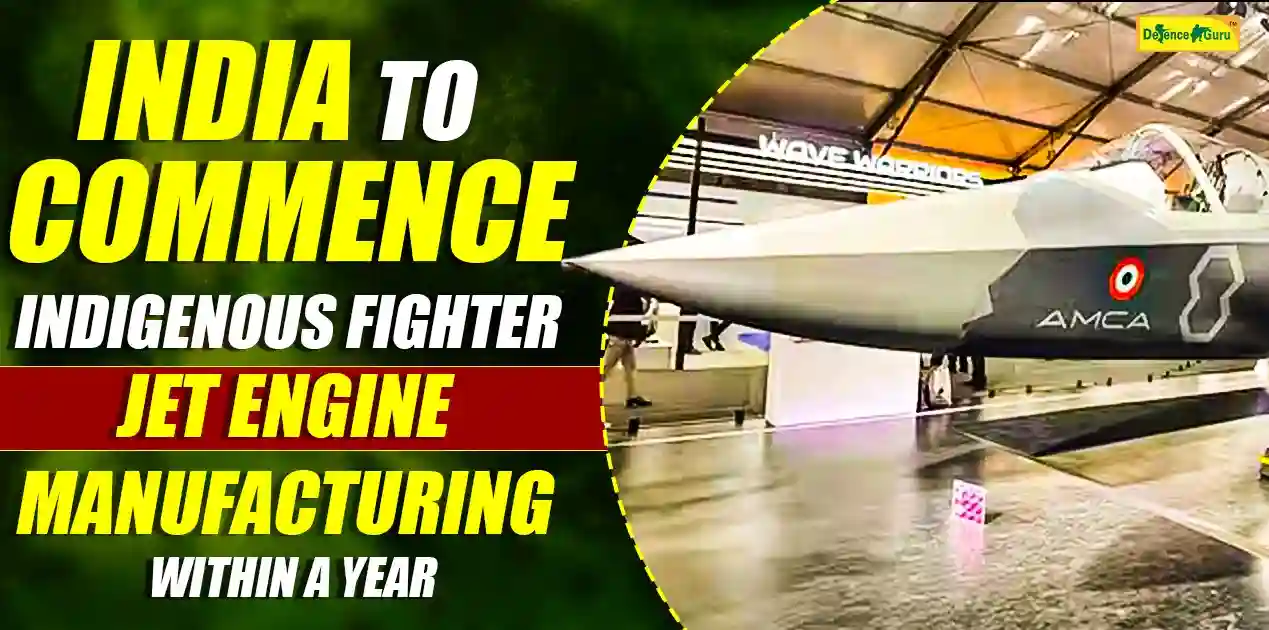India to start producing indigenous fighter jet engines in a year
Defence Minister Rajnath Singh Full technology transfer and indigenous manufacturing to strengthen aerospace self-reliance.
In a major leap towards achieving Atmanirbhar Bharat and defence indigenization, Defence Minister Rajnath Singh announced that India will begin manufacturing advanced fighter jet engines locally within the coming year.
Speaking in an exclusive interview to Network18 Group Editor-in-Chief Rahul Joshi, Singh said talks with leading global aerospace manufacturers — including GE Aerospace of the USA and Safran of France — are making steady progress and the final nod for the collaboration will come from the Cabinet Committee on Security (CCS).
"Our mission is simple — Indian aircraft should be powered by engines built in India, by Indian engineers," Singh asserted, underscoring that full ToT would be a non-negotiable clause in any partnership agreement.
Towards Complete Aerospace Independence
Currently, India is dependent on imported engines and critical components to keep platforms like the TEJAS Light Combat Aircraft going. However, Singh clarified that this dependency is temporary. The government’s long-term aim is to achieve total indigenisation of the aerospace ecosystem.
“While we may procure engines from abroad today, their manufacturing must happen on Indian soil,” he said, reinforcing the commitment of the government to its ambitious initiative Make in India.
The Defence Minister further said that the future collaborations will be about empowering the indigenous defence industry, workforce capability, and strategic autonomy in defence for India.
AMCA Development Enters Key Phase
Giving an update on the AMCA or Advanced Medium Combat Aircraft, India's very first 5.5-generation stealth fighter, Singh confirmed that the design phase is complete and development is moving ahead "smoothly and effectively." He exuded confidence that, in a decade or less, the AMCA will be ready, while consistent government funding and institutional support drive its progress.
Rafale's Combat Success and MRFA Program Progress
Referring to the recent operations, among them Operation Sindoor, Singh praised the performance of the Rafale fighter jets as "battle-proven assets that exceeded expectations in real combat scenarios."
He also discussed how the procurement process for 114 multi-role fighters under MRFA, intended to enhance the IAF's operational strength and strategic capability, is progressing in a positive direction.
Defence Exports Touch ₹25,000 Crore
Singh highlighted India's growing global influence in the defence sector, announcing a leap to ₹25,000 crore in defence exports with an ambitious goal to double the figure by 2030.
Driven by international demand for armoured vehicles, naval systems, drones, precision munitions, and artillery equipment, the company's growth is evident.
He further revealed that over 550 items have been marked for import substitution, and domestic production for many of these components is already underway — strengthening India's supply resilience and battlefield readiness.
India's Road to Defence Autonomy. Terming the recent progress "remarkably encouraging", Singh reiterated that India's ultimate objective is to design, develop, and manufacture all major defence platforms within the country. With greater private sector participation and technology-sharing partnerships shaping the industry, India is now steadily moving toward genuine defence self-reliance. “Our journey toward complete self-reliance is a reality within reach, no longer a dream,” Singh said in conclusion.
Read more:
India Set to Induct 800-km Range BrahMos-ER Cruise Missile by 2027
Indian Navy’s AI-Powered Stealth Drone ‘Abhimanyu’ to Join Carrier Fleet by 2026

















